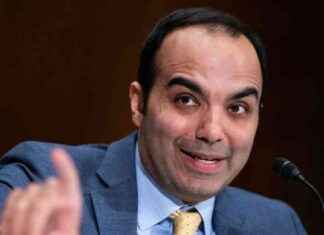The race for the White House is heating up as the election draws nearer, with Democratic presidential nominee Vice President Kamala Harris and Republican presidential nominee former President Donald Trump facing off in what promises to be a tightly contested battle. One key indicator that has historically been accurate in predicting election outcomes is the “misery index,” which combines the unemployment rate with the annualized inflation rate in the U.S.
The “misery index” currently stands at 7.02, which suggests a favorable outcome for Harris according to analysis by research firm Strategas. This index has a strong track record of predicting election results, correctly forecasting 15 out of the last 16 races for the White House. The only exception was in 2016 when Donald Trump defied the odds and won the election.
For the incumbent party, in this case the Democrats led by Harris, to secure victory in November, the misery index would need to fall below 7.353 by October. This level is based on historical data and indicates that voters may not be “miserable” enough with the current economic conditions to vote for a change in leadership.
Factors such as falling gasoline prices and a slight decline in the jobless rate for August are contributing to the relatively low misery index. However, Daniel Clifton, head of policy research at Strategas, warns that the race is still extremely close and the outcome could swing either way.
The upcoming debate between Harris and Trump is expected to be a crucial moment in the campaign, with Clifton emphasizing the high stakes involved. The debate, scheduled to take place in Philadelphia and hosted by ABC News, will provide both candidates with an opportunity to make their case to the American people.
As the election approaches, economic indicators such as the consumer price index will continue to play a significant role in shaping voter sentiment. Economists are expecting the index to show a 2.6% increase compared to the previous year, reflecting a downward trend in inflation from the levels seen during the early stages of the Covid-19 pandemic.
The Federal Reserve, which sets U.S. monetary policy, has a target of 2% for annual price growth, and the recent moderation in inflation has helped to lower the overall misery index. However, concerns remain about the labor market, as the latest job report showed slower than expected payroll growth in August.
The outcome of the election could hinge on how these economic factors evolve in the coming months. If the jobless rate rises or inflation spikes unexpectedly, it could sway voters towards one candidate over the other. As the campaign intensifies, both Harris and Trump will need to make a compelling case for why they are the best choice to lead the country forward.
Challenges Ahead for Harris
Despite the favorable economic conditions that currently seem to be working in her favor, Kamala Harris still faces significant challenges in the race for the presidency. The close margin indicated by the misery index suggests that the outcome is far from certain, and any unexpected developments could tip the scales in either direction.
One potential obstacle for Harris is the ongoing uncertainty surrounding the labor market. While the jobless rate saw a modest decline in August, there are concerns that this trend may not continue in the months leading up to the election. A sudden increase in unemployment could erode support for the incumbent party and give Trump a boost in the polls.
Another issue that Harris must navigate is the unpredictability of the current political climate. With tensions running high across the country and a deeply divided electorate, the outcome of the election is far from guaranteed. Harris will need to appeal to a wide range of voters and present a clear vision for how she plans to address the challenges facing the nation.
Trump’s Path to Victory
On the other side of the political spectrum, Donald Trump is mounting a spirited campaign to win back the presidency. Despite facing an uphill battle in the polls and the economic indicators favoring his opponent, Trump remains a formidable candidate with a dedicated base of supporters.
One key factor that could work in Trump’s favor is his appeal to voters who feel disenfranchised by the current political system. Trump’s populist message and focus on issues such as immigration and trade have resonated with many Americans who feel left behind by the traditional political establishment.
Additionally, Trump’s strong performance in the 2016 election demonstrates his ability to defy expectations and pull off a victory against the odds. While the current economic conditions may not be as favorable for him this time around, Trump’s supporters remain loyal and enthusiastic, providing him with a solid foundation for his campaign.
As the election draws nearer, both candidates will need to make their case to the American people and convince undecided voters that they are the best choice to lead the country. The outcome of the race remains uncertain, with economic indicators pointing to a close contest between Harris and Trump.
In the weeks leading up to the election, all eyes will be on the candidates as they make their final push for victory. The upcoming debates, economic data releases, and campaign events will all play a crucial role in shaping the outcome of the race for the White House. Voters will have the opportunity to weigh the candidates’ positions on key issues and decide who they believe is best suited to lead the country in the years ahead.








